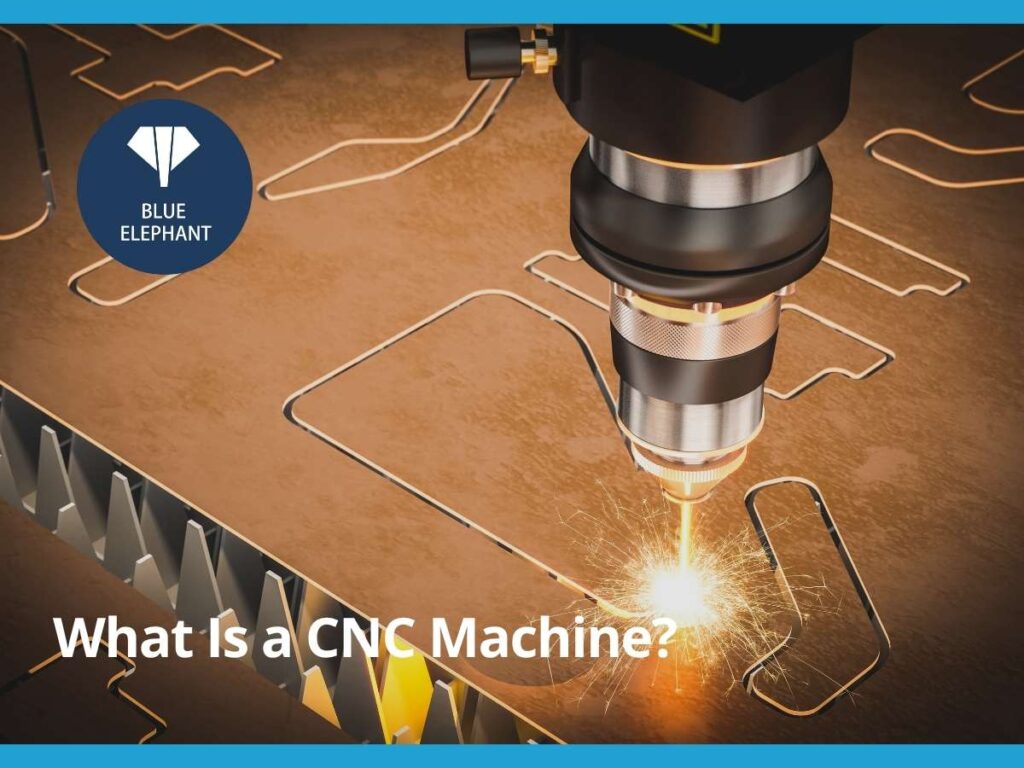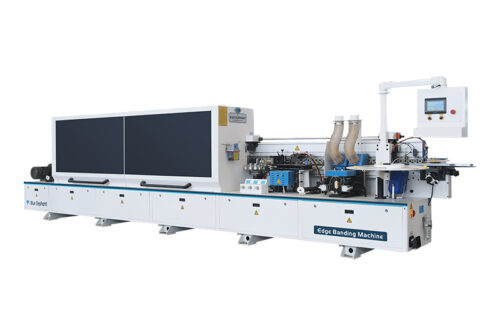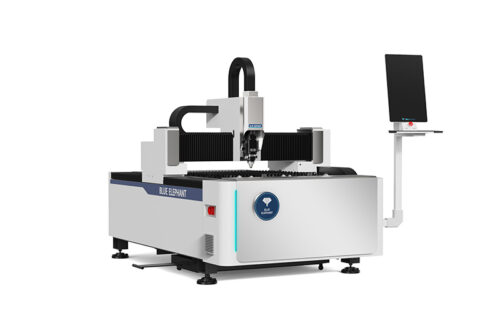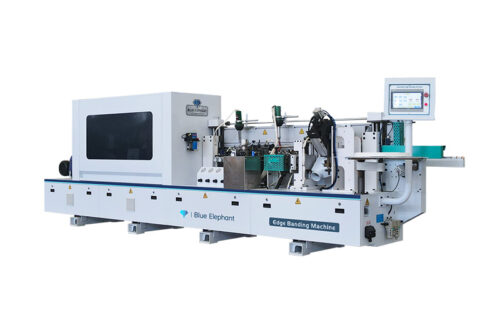One of the biggest challenges in manufacturing? Human error. Even the best machinist gets tired, makes mistakes, or slows down after hours of work.
But CNC machines don’t. They work non-stop, cutting, drilling, and shaping materials with perfect accuracy.
That’s why CNC technology has become the backbone of industries like furniture making, mold design, and advertising production.
I’ve worked closely with machine dealers and repair technicians, and I’ve seen firsthand how CNC machines improve efficiency and quality.
In this guide, I’ll walk you through what CNC machines are, how they operate, and why businesses rely on them. No overcomplicated terms. Just a simple breakdown of how these machines work—and why they matter.
By the time you finish, you’ll understand CNC technology well enough to use it, buy it, or just appreciate how much it impacts modern manufacturing.
So let’s begin!
1. What is a CNC Machine?
I remember watching an old machinist cut metal by hand. Every movement was slow, careful. One small slip and the part was ruined. It took years to master that skill. Then, I saw a CNC machine do the same job in minutes—flawlessly. That was the moment I understood why CNC machines are changing the game.
CNC stands for Computer Numerical Control. At its core, a CNC machine is a tool controlled by a computer. Instead of a person manually cutting, drilling, or shaping material, the machine follows a precise set of instructions, known as a CNC program.
Think of it like a 3D printer, but instead of adding material, it removes it. A CNC machine takes a raw block of metal, wood, or plastic and carves out a perfect part—every single time.
How CNC Machines Automate Manufacturing
In traditional machining, a worker must measure, cut, and shape materials by hand. It’s slow. It’s prone to mistakes. It requires skill and patience.
CNC machines remove that guesswork. The operator enters a design into a computer, and the machine does the rest. It moves cutting tools with extreme accuracy. It doesn’t get tired. It doesn’t make random errors.
With CNC, manufacturers can:
- Make complex parts quickly
- Repeat the same job perfectly every time
- Reduce human error
- Increase production speed
Key Advantages of Manual Machining
Manual machining has its place. But CNC machines offer several major benefits:
- Precision: Every cut is exact. No slight hand movements. No measuring errors.
- Consistency: Whether making one part or a thousand, the results are identical.
- Efficiency: A CNC machine works faster than a human. It can run non-stop.
- Versatility: These machines can cut, drill, mill, engrave, and more.
Why Are CNC Machines Important?
Manufacturing has evolved. The demand for precision parts is higher than ever. Industries like automotive, aerospace, furniture, and mold-making rely on CNC machines daily.
Here’s why:
- They improve accuracy. Even the best machinists make mistakes. CNC machines don’t.
- They boost productivity. Less downtime, faster production, more output.
- They save costs. Fewer errors mean less wasted material and lower labor costs.
More companies are switching to CNC because it keeps them competitive. If you want precision, speed, and efficiency, CNC machining is the answer.
Now that you know what a CNC machine is and why it matters, let’s look at how it works.
2. How CNC Machines Work
Imagine watching a metal block transform into a perfect part—no hands guiding the tool, no measuring by eye. Just a machine following commands with pinpoint accuracy. That’s the power of CNC machining.
At first glance, a CNC machine might look like a standard milling or cutting tool. But real magic happens inside. Unlike manual machines, CNC machines don’t rely on human control. Instead, they follow computer-generated instructions to carve, drill, or cut materials into precise shapes.
Basic Working Mechanism of CNC Machines
A CNC machine operates through computer-controlled programming. The operator enters a design into a computer, and the machine executes the job step by step. This process eliminates guesswork and human error.
The instructions come in the form of G-code and M-code:
- G-code controls movement where the tool goes, how fast, and how deep it cuts.
- M-code manages machine functions starting the spindle, changing tools, or controlling coolant flow.
Once the program is loaded, the machine moves exactly as instructed, ensuring consistent and flawless results every time.
Key Components of a CNC Machine
Several key parts work together to make this process seamless:
- Controller: The brain of the CNC machine. It processes the G-code and sends signals to the machine’s motors.
- Drive System: Converts those signals into motion, moving the cutting tool with precision.
- Spindle: Holds and rotates the cutting tool at high speeds to remove material.
- Tool Changer: Found in advanced CNC machines, this system automatically switches tools for different tasks.
Each component plays a role in delivering fast, accurate, and efficient machining.
Types of Movements in CNC Machines
CNC machines can move in straight lines, rotate, or tilt depending on the complexity of the design.
Linear vs. Rotational Motion
- Linear motion moves in straight paths along the X, Y, and Z axes.
- Rotational motion allows either the tool or the workpiece to rotate, creating curved or angled cuts.
Understanding 3-Axis, 4-Axis, and 5-Axis Movements
- 3-Axis Machines: Move left/right (X), forward/backward (Y), and up/down (Z). Standard for basic milling and cutting.
- 4-Axis Machines: Include rotation, allowing the workpiece to turn for more complex shaping.
- 5-Axis Machines: The most advanced, enabling the cutting tool to tilt and rotate in almost any direction. Ideal for aerospace and medical applications.
Why It Matters
CNC machines aren’t just tools—they’re the backbone of modern manufacturing. At Blue Elephant, we manufacture CNC machines that increase efficiency, reduce errors, and handle tasks beyond human capability. From furniture-making to aerospace engineering, these machines are shaping the future of production.

3. Types of CNC Machines
If you work in manufacturing, machining, or fabrication, you know that precision is everything. The right CNC machine can make or break a project. But with so many options out there, how do you know which one fits your needs?
At Blue Elephant, we build CNC machines for cutting, shaping, engraving, and more—so we’ve seen how different tools solve different problems. Each type of CNC machine has a specific role. Some cuts, some shapes, and others polish.
Below, you’ll find a breakdown of the most common CNC machines and how they work.
CNC Milling Machines
- Removes material from a solid block using a rotating cutting tool. It moves in multiple directions (3-axis, 4-axis, or 5-axis) for high-precision machining.
- Best for creating complex parts with tight tolerances. You’ll find these in industries where accuracy and consistency are essential.

CNC Lathes & Turning Machines
- The workpiece rotates while the cutting tool stays still, removing material to create round or cylindrical parts.
- Ideal for making shafts, bushings, and fasteners. It offers high-speed precision and is commonly used in metalworking.

CNC Routers
- Uses a high-speed rotating tool to cut and carve wood, plastic, and composites. It moves in multiple directions for intricate detailing.
- Ideal for furniture, signage, and decorative panels. CNC routers help achieve detailed designs with speed and accuracy.

CNC Plasma Cutters
- Uses a high-powered jet of ionized gas to melt through metal. It’s one of the fastest ways to cut steel, aluminum, and other conductive metals.
- Delivers high-speed, clean cuts with minimal waste. Metal fabrication shops rely on plasma cutters for quick, efficient cutting.

CNC Laser Cutters
- Uses a focused laser beam to vaporize material, producing smooth, precise cuts. It works well on metals, wood, plastics, and glass.
- Provides clean edges and intricate detailing. If your work requires fine, high-precision cutting, a CNC laser cutter is the best option.

CNC Waterjet Cutters
- Uses high-pressure water mixed with abrasive particles to cut materials. It’s perfect for materials that can’t handle heat, like stone and glass.
- Produces smooth edges without heat distortion. Waterjet cutting is ideal when you need power without damaging delicate materials.

CNC Grinders
- Uses a rotating abrasive wheel to smooth and refine metal surfaces. It removes small amounts of material with extreme precision.
- Often used for sharpening tools and fine-tuning metal parts. If you need a flawless surface finish, CNC grinders are essential.

4. Key Components of a CNC Machine
If you work with CNC machines, you know that every part plays a role. Whether you’re a dealer, repair technician, or operator, understanding these components helps you choose the right machine, troubleshoot problems, and maintain performance. Let’s break down the key components that make a CNC machine work.
CNC Controller & Software
The CNC controller is the brain of the machine. It processes design files and converts them into commands that the machine can follow.
- How it works: It translates digital designs into G-code (motion control) and M-code (machine functions).
- Popular controllers & software:
- Mach3 & LinuxCNC: Common for DIY and smaller CNC setups.
- Fanuc, Siemens & HAAS: Used in industrial-grade CNC machines.
- Why it matters: Without a good controller, even the best CNC machine won’t run efficiently. It ensures accuracy, smooth motion, and real-time adjustments.
Motors & Drive System
The drive system powers the movement of the cutting tool, controlling speed and precision.
- Types of motors:
- Stepper motors: Move in small steps, cost-effective, best for light-duty applications.
- Servo motors: More advanced, offer higher speed, torque, and precision for industrial use.
- Why it matters: A poorly controlled motor means misalignment, inaccurate cuts, and wasted material.
Spindle & Cutting Tools
The spindle is responsible for cutting, drilling, and shaping materials. It holds and spins the cutting tool at high speeds.
- Common cutting tools:
- Drill bits: For making precise holes.
- Milling cutters: For shaping and carving.
- End mills: For detailed, multi-directional cutting.
- Engraving bits: For fine, detailed designs.
- Why it matters: A weak spindle or the wrong tool can cause rough edges, inaccuracies, or even tool breakage.
Workholding & Tool Changers
CNC machines must keep materials secure while cutting. They also need to swap tools efficiently.
- Workholding systems:
- Clamps & vises: Hold the material firmly in place.
- Vacuum tables: Used for flat materials like wood and acrylic.
- Automatic Tool Changer (ATC):
- Swaps tools without stopping the machine.
- Increases efficiency and reduces downtime.
- Why it matters: Proper workholding ensures precision and safety, while ATCs make multi-tool operations faster and more accurate.
5. Applications of CNC Machines in Various Industries
CNC machines aren’t just for big factories. They shape products across industries, from metal fabrication to custom artwork. Whether you’re in manufacturing, woodworking, or even jewelry design, CNC technology can improve precision and efficiency.
Let’s take a closer look at where CNC machines make an impact.
Manufacturing & Industrial Production
Factories rely on CNC machines for high-speed, high-precision production. If you’ve ever driven a car, flown on a plane, or used medical equipment, chances are CNC machining played a role in its creation.
- Automotive & Aerospace: CNC machines cut engine parts, chassis components, and turbine blades with extreme accuracy.
- Medical Industry: Used to make implants, surgical tools, and prosthetic devices. Every detail matters in healthcare, and CNC ensures precision.
- Metal & Plastic Fabrication: CNC machines handle everything from cutting steel beams to shaping plastic parts for appliances and electronics.
Without CNC, mass production wouldn’t be as efficient or consistent.

Furniture & Woodworking
Walk into a custom furniture shop, and you’ll likely see a CNC router at work. Unlike traditional woodworking, CNC machines carve detailed designs without human error.
- Cabinet Making: CNC routers cut doors, panels, and intricate designs in minutes.
- Custom Furniture: From detailed table legs to artistic headboards, CNC ensures precision cutting.
- Engraving & Carving: Fine details in woodwork used to take hours. Now, a CNC machine does it in a fraction of the time.
Woodworkers use CNC to save time, reduce waste, and improve accuracy.

Advertising & Sign Making
Ever wondered how businesses get their signs looking perfect? That’s CNC technology at work.
- 3D Lettering & Branding: CNC routers create large, professional signboards with crisp edges.
- Laser Engraving: Used for logos, promotional materials, and detailed engraving on metal, plastic, and acrylic.
- Custom Signage: Whether it’s a glowing storefront sign or a decorative house number, CNC machines handle it with ease.
CNC helps businesses stand out with clean, high-quality signage.

Mold Making & Prototyping
If a product starts as an idea, CNC helps bring it to life.
- Mold Making: CNC mills carve detailed molds used in plastic injection and metal casting.
- Prototyping: Before mass production, companies create CNC-machined prototypes to test designs.
- Precision Tooling: CNC machines make custom tools that help factories build products faster.
Without CNC, designing new products would take much longer and cost much more.

Jewelry & Engraving
CNC machines aren’t just for large industries. Jewelers use them to cut, shape, and engrave fine materials with microscopic precision.
- Gold & Silver Cutting: CNC routers and laser cutters create delicate, intricate patterns.
- Gemstone Engraving: Machines carve designs into precious stones without damaging them.
- Custom Jewelry: Personalized nameplates, engraved rings, and detailed pendants are made faster with CNC.
CNC takes craftsmanship to another level, combining technology with fine artistry.

Art, Crafts & Customization
CNC machines aren’t just for professionals. Hobbyists and artists use them for personal projects, DIY builds, and one-of-a-kind creations.
- Sculpting & Carving: CNC routers and mills cut intricate designs into wood, metal, and stone.
- Engraving: Personalization on leather, glass, and acrylic makes for unique, custom products.
- Creative Projects: From wall art to model-building, CNC gives creators precision and flexibility.
For makers and DIY enthusiasts, CNC turns ideas into reality.

6. Renting vs. Buying CNC Machines
Investing in a CNC machine is a big decision. Whether you’re running a business or managing a rental company, choosing between renting and buying can impact your costs, workflow, and production capacity.
Some businesses prefer the flexibility of renting, while others need the long-term benefits of owning their machine. Below is a detailed comparison to help you decide.
| Factor | Renting a CNC Machine | Buying a CNC Machine |
| Initial Cost | Requires minimal upfront investment. Rental fees are charged based on time or usage. | High upfront cost that varies based on machine size, brand, and features. A significant investment but can be recovered over time. |
| Long-Term Expense | Can become costly if rented frequently. Continuous payments can add up and exceed the cost of purchasing a machine over time. | More cost-effective in the long run for businesses with steady CNC machining needs. No recurring rental fees after the initial investment. |
| Best For | Short-term projects, occasional machining, or businesses testing CNC before committing to a purchase. Also ideal for those with fluctuating workloads. | Large production runs, daily operations, and businesses that need consistent access to a CNC machine. |
| Customization & Control | Limited to the machine’s pre-set options. Cannot modify software, upgrade parts, or adjust settings beyond what is provided by the rental company. | Full control over machine settings, software, and tool upgrades. Can be customized to fit specific production needs. |
| Maintenance & Repairs | Handled by the rental provider, reducing downtime caused by maintenance issues. No unexpected repair costs. | Owner is responsible for all repairs, maintenance, and part replacements. Requires technical knowledge or a dedicated maintenance team. |
| Machine Availability | May need to wait for a machine to become available, especially during high-demand periods. Availability depends on the rental company. | Always accessible whenever needed, reducing downtime and production delays. Ensures continuity in manufacturing processes. |
| Flexibility | Can switch between different CNC machines based on project needs. Useful for testing different machine types before making a purchase. | Locked into a single machine, which may limit flexibility. However, ownership allows better familiarity and efficiency with the machine. |
7. Factors to Consider When Choosing a CNC Machine
Selecting the right CNC machine goes beyond just price. It needs to fit your materials, production needs, and precision requirements. A wrong choice can slow down your workflow in business or increase costs.
Material Compatibility
Look at the materials you’ll be cutting. Some CNC machines handle metals like steel and aluminum, while others work best with wood, plastics, or acrylics. Using the wrong machine for your material can result in slow processing, excessive tool wear, or poor-quality cuts.
Production Volume & Business Needs
Think about your production workload. High-speed, industrial CNCs are designed for mass production and long operation hours. If you have a steady workload and need consistent output, an industrial machine is worth the investment. On the other hand, smaller CNCs are better suited for low-volume, custom projects where flexibility matters more than speed.
Precision & Tolerance Requirements
Consider how accurate your parts need to be. Industries like aerospace and medical manufacturing require machines with ultra-fine tolerances. Even the smallest misalignment can cause defects. In contrast, industries like furniture and signage allow for minor variations. Choosing a machine with the right level of precision ensures consistent quality in your final product.
Software & Automation Features
Check the software and automation capabilities. A CNC machine is only as good as the software that controls it. Make sure it supports CAM software like Fusion 360, Mastercam, or SolidWorks CAM. If you want to improve efficiency, look for automation features like automatic tool changers (ATC) or robotic arms to reduce downtime and manual work.
Budget & Cost vs. Value
Compare the cost with the long-term value. Entry-level CNC machines cost less upfront, but they may be slower, require more maintenance, and have limited capabilities. Industrial-grade models are more expensive but offer better speed, durability, and precision. Evaluating your return on investment (ROI) will help you decide which option makes the most sense for your business.
Conclusion
Picking the right CNC machine isn’t just about specs. It’s about your goals, your business, and your success. Every factor—from materials to precision—affects how well your CNC investment will pay off.
You’ve learned how to evaluate your options. Now, it’s time to take action.
What’s stopping you? Are you ready to improve your production, increase efficiency, and stay ahead of the competition?
Contact us today and get the CNC machine that fits your needs!
Learn More: Recommended Reads
Want to learn more? Here are some articles filled with valuable tips and information to guide you further:
- What Does CNC Machining Mean?
- What is CNC System?
- The Ultimate List of CNC Machine Names & Their Uses
- CNC Machine Tool Names: A Quick Reference List
Still haven’t found what you’re looking for? Don’t hesitate to contact us. We’re available around the clock to assist you.













